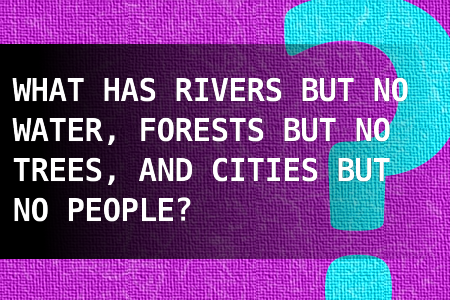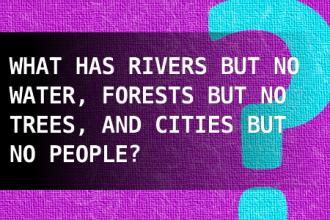What has rivers but no water, ...
Brain Teasers
[1639] What has rivers but no water, ... - What has rivers but no water, forests but no trees, and cities but no people? - #brainteasers #riddles - Correct Answers: 139 - The first user who solved this task is Sanja Šabović

2015-11-06

